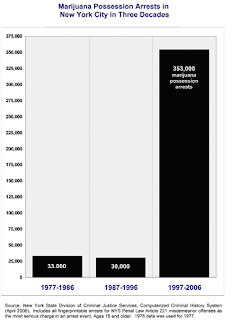There is an old saying most often attributed to Woody Allen that "90% of life is showing up." Actually, it turns out that the number is somewhere between 75 and 90, depending on the recollection of the person reciting the quote, but either way, the balance of life is about following up. Allen's point is a good one. Just get involved, make the call, or introduce yourself. The results will astonish you. In fact, once you take the initiative, momentum alone can drive you toward your goal.
Where many of us falter, however, is in the follow-up. We expect to be rewarded for our risk taking, not realizing that success is the product of both good ideas and great execution. That execution requires you to be one part relentless telemarketer (in the most respectful way, of course), one part super cheerleader (without the pom-poms) and one part Zen master (to control the anxiety), all of which are contrary to traditional legal training. Even the most successful among us get rejected the first few times we attempt something. That rejection is usually not a reflection of the merits of an idea or strategy. More often, it is simply a function of poor timing. If someone sends you a letter thanking you for your resume and advising that there are presently no openings, it is very possible that there really are no openings. Our collective instinct is to assign another meaning to that message and consider it a negative judgment on our qualifications. Next time, considering following up with a thank you note and check back in a few months. The great follow-up balancing act is to control the urge to call or e-mail someone ten times per day, but fight the complacency of making contact once and giving up. Here are some tips to manage the follow-up process.
Establish a scheduleBetween classes or billable hours, you must schedule items you need to complete. To-do lists are fine, but I would suggest using an electronic calendaring system of some sort with reminders. If you speak with someone about a job or client development opportunity, add a follow-up e-mail or phone call to your calendar. It could be a month, it could be six, just keep in touch.
Be politeWhen calling someone, ask whether the timing is convenient. If not, thank them and end the call. If they have a minute, take it, but not much more. Learning about the person you are calling is also a courteous gesture. Be sure to understand his or her business/practice area (a Google search should suffice) and try to find some memorable common ground (something as simple as practicing in the same city may work, but being alumni of the same school or residents of the same town is ideal). The key is to be yourself in the most positive way that you can while relating to the person you are contacting on both a professional and personal level.
Be succinctOnce you find common ground, get to the point. Chitchat is fine, but your goal is to follow up on whatever you original request may have been. Your contact knows you are calling out of the blue for a specific reason and is giving you an opportunity to share it. Take the opportunity and run. Describe exactly what you are following up on and why it is important for him or her to consider.
Be resilientIf (when) you get rejected, don't over-analyze that judgment. The best action you can take is to send a thank you note and move forward. Immediately follow up with the next person on your list. You will eventually speak with someone at a time that is convenient for him or her, and who has a sincere interest in what you are discussing.
Evaluate your performanceAlthough it is a mistake to criticize yourself for rejection, the great achievers and connectors use it as a chance for personal evaluation. Have you mastered your pitch? Is your tone authoritative? Be honest.
In the end, the key is to follow up in a way that demonstrates thoughtful commitment to the issue, but flexible understanding of the circumstances surrounding that level of contact. You already get 90% for showing up, work for the extra 10% and you will be handsomely rewarded.
Source: The National Law Journal,
The Other 10% of LifeAri Kaplan / Special to NLJ.com, April 14, 2008
 Notwithstanding these reforms, the report alleges that most of the arrests were based on a questionable stop and frisk campaign aimed primarily at minorities and young people and not for having marijuana “burning or open to public view”. Data provided by the Division of Criminal Justice Services showed that 52% of the suspects were Black, 31% Hispanic and only 15% White. Blacks represented 26% of the city’s population, Latinos accounted for 31% of the arrests but 27% of the population and Whites represented only 15% of those arrested while comprising 35% of the population.
Notwithstanding these reforms, the report alleges that most of the arrests were based on a questionable stop and frisk campaign aimed primarily at minorities and young people and not for having marijuana “burning or open to public view”. Data provided by the Division of Criminal Justice Services showed that 52% of the suspects were Black, 31% Hispanic and only 15% White. Blacks represented 26% of the city’s population, Latinos accounted for 31% of the arrests but 27% of the population and Whites represented only 15% of those arrested while comprising 35% of the population.


